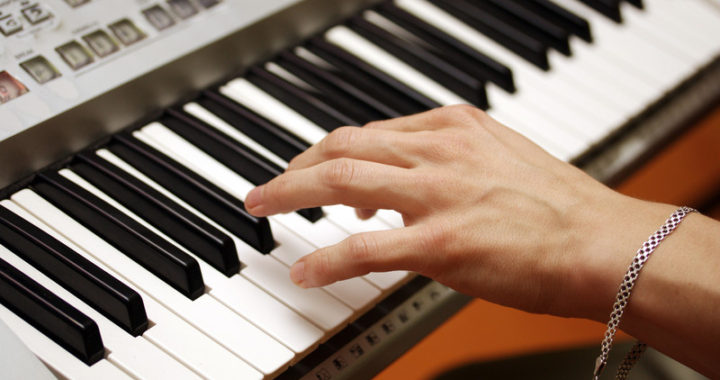Some songwriters have a natural aversion to music theory. That dislike usually goes hand-in-hand with the mistaken belief that the purpose of music theory is to tell you what you should or shouldn’t be writing. That’s never been the purpose or power of music theory. Rather, theory gives you an understanding of the structure and inner workings of music, and that’s good for any writer, whether a classical composer or pop songwriter.
There are some bits of theory that can serve a better purpose for songwriters than others. For example, songwriters can greatly benefit from understanding what scales, modes and time signatures are, but the same benefit might not necessarily immediately extend to knowing how to read music in different clefs, or how to read a full orchestral score.
 Does chord theory give you a headache? Need to start at the beginning? “The Essential Secrets of Songwriting” 10-eBook Bundle includes several eBooks meant to show you exactly how chords work. It also includes hundreds of progressions you can use right now in your songs, and formulas for creating your own in seconds. Get today’s free deal: a copy of “Creative Chord Progressions”
Does chord theory give you a headache? Need to start at the beginning? “The Essential Secrets of Songwriting” 10-eBook Bundle includes several eBooks meant to show you exactly how chords work. It also includes hundreds of progressions you can use right now in your songs, and formulas for creating your own in seconds. Get today’s free deal: a copy of “Creative Chord Progressions”
But scales and modes? That’s definitely something worth knowing. There’s a lot to know, mind you, so let’s concentrate on one small bit of scales and modes that might have some immediate use in your songwriting: starting a song in the Aeolian mode, then switching to a major key.
The Aeolian Mode
A modal scale is one that uses the key signature of a major scale, but starts and ends on a different note. Here’s a chart to show this:
Play a C major scale, but start and end on:
- D: Dorian mode (a minor-sounding scale)
- E: Phrygian mode (a minor-sounding scale)
- F: Lydian mode (a major-sounding scale)
- G: Mixolydian mode (a major-sounding scale)
- A: Aeolian mode (a minor-sounding scale)
- B: Locrian mode (a minor-sounding scale)
The scale I want to focus on is the Aeolian modal scale, which uses these notes:
A B C D E F G A
The Chords of the Aeolian Mode
If you play a 3-note chord (a basic triad) above each note of the Aeolian scale, you’ll get these 7 chords:
Am Bdim C Dm Em F G
If you’re at all familiar with the chords of the C major scale, you’ll notice that they’re exactly the same:
C Dm Em F G Am Bdim
The difference between chords that indicate A Aeolian and ones that indicate C major is that with Aeolian chords, the Am chord sounds like a “tonic”, while in C major the C chord sounds like the tonic.
So even though both of the following progressions use chords from the same list of 7 chords, the first progression sounds firmly like A Aeolian, while the second progression sounds firmly like C major:
- Am G F G Am G F G Dm G Am
- C F G F C F G F Am Dm G C
The Aeolian sound of the first progression comes mostly from the fact that Am is set up as an important beacon: the progression keeps coming back to A minor. The second progression sets up C as the important anchor, with the progression constantly moving back to that chord.
Moving from Aeolian to Major
A good number of songs will use mainly minor chords for a verse, and switch to mainly major for the chorus. I find that Taylor Swift’s “Style” is a good, simple example of this, which uses this as a verse progression (transposed just to demonstrate): Am F… and then switches to C F for the chorus. That key relationship is the one I’m talking about: Am – F implies the Aeolian mode, switching to C major.
Switching from Aeolian to major is actually easy for the reason that they use the same chords. So if you want to have a verse sound minor, and then move to a chorus that sounds major, the Aeolian-major relationship is a great one to use.
3 Progression Examples
So here are some progressions you can try. You’ll notice that as the verse progression nears the point where it’s going to connect to the chorus, it starts to sound major, and that makes the transition really easy for the audience to hear and understand.
Example 1
Verse: Am F Am F Dm Em Am Em |Am F Am F Dm Em F G
Chorus: C F C F Dm Em Am G C F….
Example 2
Verse: Am C F G Am C F G (repeat as needed)
Chorus: C Am F G C…
Example 3
Verse: Am Dm Em Am G F Em G |Am Dm Em Am G F Am G
Chorus: C Dm Em Am C F Dm G |C Dm…
Trying the Dorian Mode
So try some experimenting with Dorian mode. As with Aeolian, the D Dorian chords are the same as the C major scale, but are organized to make D sound like a “tonic.” Here’s an example of a D Dorian progression that moves to C major:
Dm C Dm G Dm C Am G (repeat) –> C G Am F C…
 Written by Gary Ewer. Follow on Twitter.
Written by Gary Ewer. Follow on Twitter.
“Essential Chord Progressions” give you hundreds of progressions you can use as is, or modify to suit the songs you’re working on. If all you need are some chords to get you going, check out this ebook collection.
give you hundreds of progressions you can use as is, or modify to suit the songs you’re working on. If all you need are some chords to get you going, check out this ebook collection.










